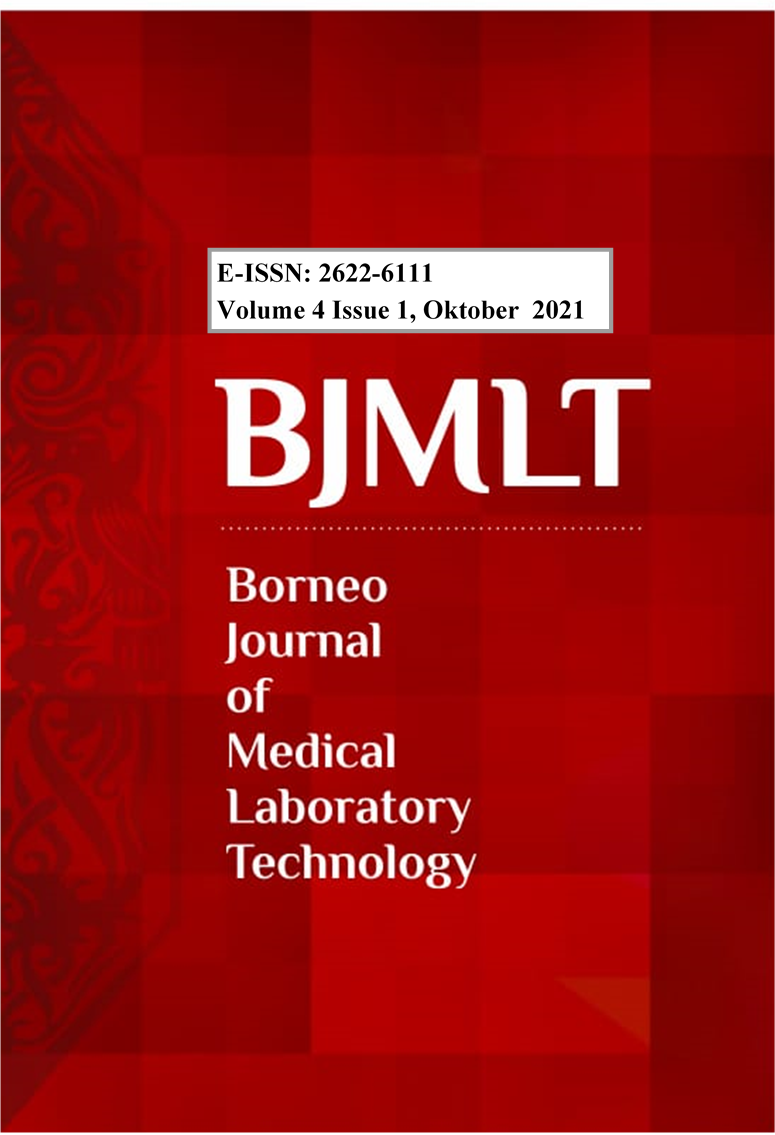Gambaran Stigma Masyarakat tentang Covid-19 di Kepanjen Malang Description of Community Stigma about Covid-19 in Kepanjen Malang
Main Article Content
Abstract
Stigma is a sign that is created on the human body to be shown and to inform the public that a person who has that sign constitutes no morals and primness expression that belongs to someone. The purpose of this study is to understand society's stigma about Covid 19 in Cepokomulyo Village, Kepanjen sub-district Malang regency. The research design used in this research is a descriptive method and cross-sectional approach. The sampling technique in this research uses Cluster Sampling of as many as 364 respondents. The respondents were given a questionnaire by the researcher, it is a questionnaire variable of society stigma (sign, signal, stereotypes, prejudice, and discrimination) to validate the data. In validating the questionnaire, the researcher used I-CVI (content validity index). And the data is stated valid with a score of 0.935. Reliability test from all the questionnaires which had been fulfilled by the respondents gave the results, those are signal/cues 0.829, Stereotypes 0.805, prejudice 0.850, and discrimination 0.802. As the result of the research, there are 4 variables that mean good categories. The percentage highest scores lie in stereotypes variable as many as 94.2% (n=364), which means the society stigma is good. Because society does not judge people by appearance. The conclusion, society did not give a bad stigma about Covid 19. Good communication and getting information can be solutions to build up society's stigma about covid 19. And the bad stigma would not show up in society.
Downloads
Article Details
All rights reserved. This publication may be reproduced, stored in a retrieval system, or transmitted in any form or by any means, electronic, mechanical, photocopying, recording.
References
Azmi, F. 2020. Kasus Corona di Jatim Tembus 7.078, Ini Peta Persebarannya’, Detik News, April. Available at: https://m.detik.com/news/berita-jawa-timur/d-4960599/kasus-corona-di-jatim-tembus-7078-ini-peta-persebarannya.
Biswas Debashish, Fosiul, Sanghvi Tina, Roy Sumitro, Luby P. Stephen, E. Leanne. 2017. ‘Provision versus promotion to develop a handwashing
station : the effect on desired handwashing behavior’. BMC Public
Health, (May). doi: 10.1186/s12889-017-4316-6
BNPB. 2020. Gugus Tugas Percepetan Penanganan COVID-19, Badan Nasional Penanggulangan Bencana. Available at: www.covid19.go.id.
Dahlan, U. 2013. Buku Ajaran Ketrampilan Dasar Praktik Kebidanan. Malang: Inti Media.
Hulland, K. R. S, Leontsini Elli, U.Leanne, Afroz Aasma, Dutta C Notan, Nizame A Fosiul, Luby P Stephen, Ram Pavani, Winch Peter. 2013. ‘Designing a handwashing station for infrastructurerestricted communities in Bangladesh using the integrated behavioural model for water , sanitation and hygiene interventions (IBM-WASH)’,
BMC Public Health. BMC Public Health, 13(1), p. 1. doi: 10.1186/1471-
2458-13-877.
Kemendagri RI. 2020. ‘PP No.20 Tahun 2020 tentang Percepatan Penanganan Corona Virus Disease 2019 Di Lingkungan Pemerintah Daerah’.
KEMENDES. 2020. ‘Surat Edaran No. 8 Tahun 2020 tentang Desa Tanggap COVID-19 dan Penegasan Padat Karya Tunai Desa’.
Notoatmodjo, S. 2013. Ilmu Kesehatan Masyarakat. Jakarta: Rineka Cipta.
PERPRES. 2020. PP No. 21 Tahun 2020 Tentang Pembatasan Sosial Berskala Besar Dalam Rangka Percepatan Penanganan Corona Virus Disease 2019 (COVID-19)’.
